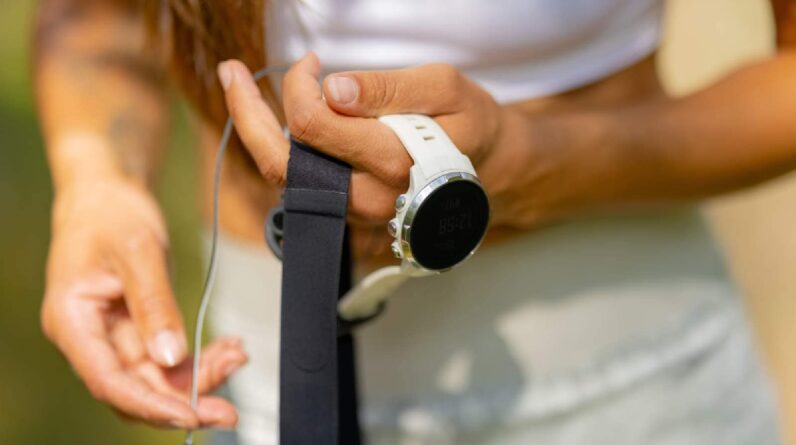
Embarking on the journey from a sedentary lifestyle to completing a marathon is an exhilarating challenge. It requires physical endurance and the wisdom to navigate through common setbacks, such as persistent foot or ankle pain. The path from casual jogging to marathon running is fraught with potential foot and ankle issues. These can range from mild discomfort to debilitating pain, often derailing training plans and dampening spirits. Understanding the causes, adopting preventive measures, and knowing when and how to seek professional help are crucial in managing these challenges.
Importance of Proper Footwear
Choosing the right running shoes is crucial for marathon success and foot health. Shoes that provide the correct balance of support, cushioning, and fit can greatly reduce the risk of foot and ankle injuries. It’s essential for runners to understand their foot type – be it flat, neutral, or high-arched – and select shoes that cater to their specific needs. It’s advisable to replace running shoes regularly. Over time, shoes lose their cushioning and support, increasing the risk of injuries. The rule of thumb is to replace them every 500 to 800 kilometres.
Preventative Measures
Prevention of foot and ankle injuries begins with a well-structured training plan. Gradually increasing mileage and intensity helps the body adapt without overloading the feet and ankles. Incorporating strength training and flexibility exercises specifically targeting these areas can significantly enhance their resilience.
Paying attention to running surfaces is essential. Varied terrain can help distribute the impact more evenly, while consistently running on hard surfaces like asphalt can increase the risk of injury. Cross-training with low-impact activities such as cycling or swimming can also reduce the strain on feet and ankles, providing a balanced approach to overall fitness and endurance building.
Seeking Professional Help
When persistent foot or ankle pain occurs, it’s crucial to consult with healthcare professionals. A general practitioner, sports physician, or podiatrist can offer a diagnosis and recommend an appropriate course of action. Ignoring the pain or self-treating without professional advice can lead to more severe injuries and prolonged recovery times.
These professionals can also guide runners in modifying their training routines and suggest effective pain management strategies. In some cases, they may refer to specialists for advanced treatments or rehabilitation programs. Early intervention not only aids in quicker recovery but also educates runners on how to prevent future occurrences of similar injuries.
Custom Orthotics: A Viable Solution
For many runners, especially those with specific biomechanical issues, custom-made orthotics can be a lifesaver. These personalised shoe inserts are designed to support and align the foot and ankle, reducing stress on these areas. Experts like The Lower Limb Clinic can provide tailored solutions, addressing individual needs and enhancing overall running efficiency.
Orthotics work by correcting abnormal foot mechanics, distributing pressure more evenly, and providing shock absorption. This can lead to significant reductions in pain and discomfort, particularly for those with flat feet, high arches, or pronation issues. Consulting with a podiatrist or orthotic specialist is the first step in determining if custom orthotics are the right choice for you.
Alternative Therapies
Exploring alternative therapies can also be beneficial in managing foot and ankle pain. Treatments such as acupuncture, yoga, and Pilates have shown promise in reducing discomfort and improving flexibility and strength. These therapies can complement traditional medical treatments, offering a holistic approach to recovery and prevention.
Massage therapy, in particular, can be very effective in relieving tension, improving circulation, and promoting healing in the foot and ankle regions. Moreover, incorporating stretching and strengthening exercises as part of a daily routine can significantly enhance the resilience of these areas, reducing the likelihood of future injuries.
Rest and Recovery
Taking adequate rest is sometimes the most effective remedy for foot and ankle pain. This allows the body time to heal naturally without further stress. During rest periods, maintaining overall fitness can be achieved through alternative, low-impact exercises such as swimming, cycling, or elliptical training.
It’s also important to listen to your body and not rush back into intensive training. Gradual resumption of running, coupled with consistent monitoring of foot and ankle responses, ensures a safe return to form. Proper rest and recovery are not only essential for healing but also for preventing the recurrence of injuries.
Building Back Up Gradually
Once recovery is underway, it’s crucial to slowly and steadily rebuild running endurance and strength. A gradual increase in mileage and intensity helps avoid overloading the healing tissues. Setting realistic goals and being patient with progress is key to a successful return to marathon training.
Incorporating a variety of running drills, such as hill repeats, speed work, and long slow runs, can help in progressively strengthening the feet and ankles. Monitoring pain and fatigue levels during this phase is essential, as it guides the necessary adjustments to training intensity and volume, ensuring a balanced and injury-free build-up to race day.
Summary
Persistent foot and ankle pain can be a daunting obstacle for marathon runners. However, with the right knowledge, preventative strategies, and professional guidance, it is possible to overcome these challenges. Embracing a comprehensive approach that includes proper footwear, custom orthotics, alternative therapies, and a sensible training regime can lead to a pain-free and rewarding marathon experience.







